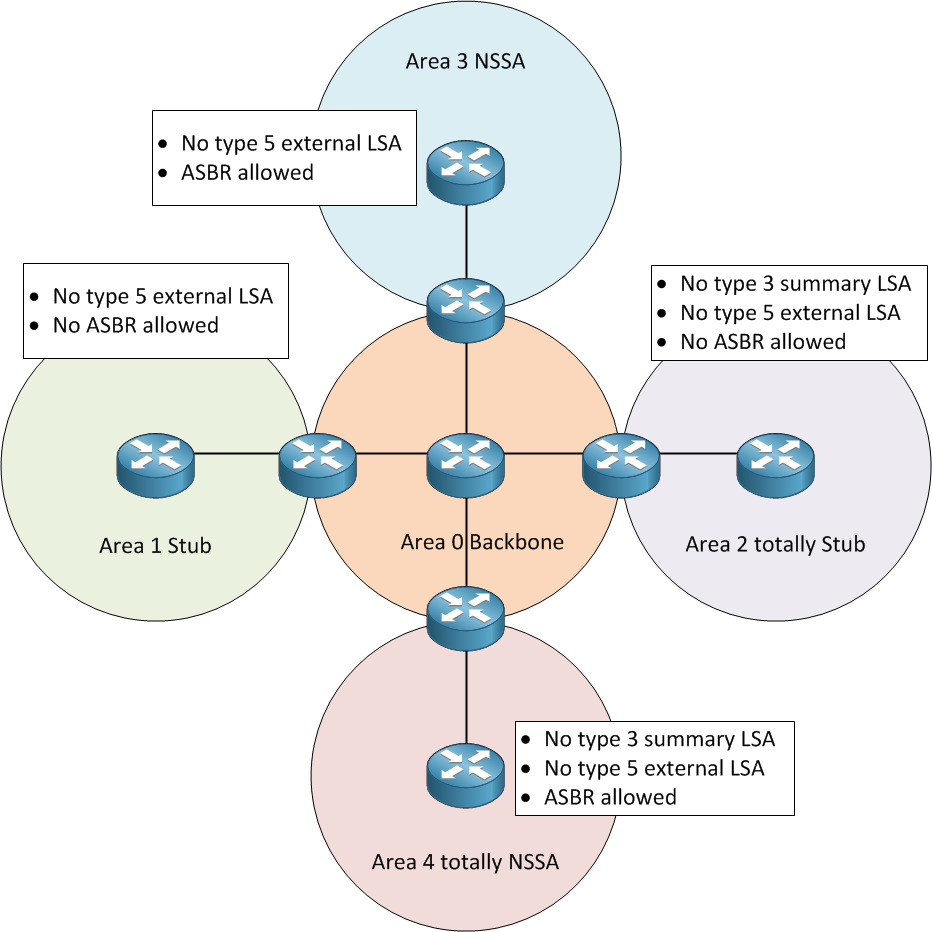
































In the complex world of computer networking, the Open Shortest Path First (OSPF) protocol is extremely important. OSPF is a crucial part of routing data across networks, and it operates within specific areas, each with its own role. In this article, we explore the five OSPF area types, explaining their unique functions and significance in network design.
1. Backbone Area (Area 0): The Central Core of OSPF
Imagine the OSPF network as a complicated web of connected nodes. In this web, the Backbone Area, also known as Area 0, plays a vital role. According to OSPF design principles, Area 0 acts as the central hub in the OSPF network. It serves as the main point for transmitting link information from other areas. Essentially, all other areas must be connected to Area 0 to ensure smooth data exchange. The Backbone Area supports various types of Link State Advertisements (LSAs), including Type 1, 2, 3, 4, and 5.
2. Standard Area: Normal Data Transfer
The Standard Area, often referred to as the standard area, functions as an area where OSPF packets are transmitted without restrictions. Just like the Backbone Area, the Standard Area supports a wide range of LSAs, including Type 1, 2, 3, 4, and 5.
3. Stub Area: Simplified Routing
The Stub Area lives up to its name by simplifying routing. This area is unique because it does not accept external routes from non-OSPF networks. Instead, if it needs to reach external routes, it forwards them using the default route. The Stub Area primarily supports LSAs of Type 1, 2, and 3.
4. Totally Stubby Area: Streamlined and Secure
The Totally Stubby Area takes simplification a step further. This area not only refuses to accept external routes but also rejects link information from areas outside its domain. To reach networks beyond the area, it uses default routes, similar to the Stub Area. However, it's important to note that the Totally Stubby Area does not allow ordinary Type 3 LSA packets. Instead, it supports this LSA type with default routes. This area accommodates Type 1, Type 2 LSAs, and Type 3 LSAs with default routes.
5. Not So Stubby Area (NSSA): Versatility Amid Simplicity
The Not So Stubby Area, often known as NSSA, is a hybrid entity that combines the concept of a Stub Area with additional capabilities. It maintains the simplicity of a stub area but also has the ability to send external routes to other areas. The NSSA supports a mix of LSAs, including Type 1, 2, 3, and 7. It's worth mentioning that there is another variation called the NSSA of the Totally Stubby Area mode. This mode, despite being in a completely stubby area environment, allows the introduction of external routes.
These OSPF area types are like puzzle pieces in network design. The choice of area type is crucial and should align with the specific network's requirements and topology.
Are you looking for networking solutions that align with your OSPF design and implementation? Hi-Network.com has you covered. As a top destination for networking products and solutions, our platform offers a wide range of options to meet your unique needs.
Visit Hi-Network.com for Excellent Networking
Hi-Network.com stands out as a comprehensive solution for all your networking needs. Whether you're designing an OSPF network or searching for the latest networking products, we have the knowledge and products to support your journey.
 Hot Tags :
Hot Tags :